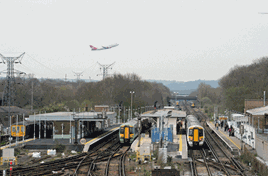The timetabling has been very complex - for example, south London lacks grade-separated junctions. And for more than a century passengers have been offered the options of a City terminus or a West End terminus, which means large numbers of conflicting paths across flat junctions.
Curtis explains: “We can make small improvements: a minute here and there in the timetable can make a big difference in the way trains are ordered approaching Victoria, and that evens out the passenger loads between trains.
“The Brighton Main Line is very congested. Growth is still extraordinary. Even in the middle of the disruptive London Bridge work, passenger numbers there are increasing. The new Thameslink trains are longer, and they will take a lot more people. Down to Brighton it will be 12-cars on all services in the peak. And there will be more trains, especially off-peak.”
In less than a decade, London Bridge has added an extra 20 million passengers a year.
“But I live on the Thameslink route,” says Curtis. “I remember what happened last time we got longer trains. I know that within three months of starting 12-car trains they will all be full to bursting.
“We will have a lot more people to manage - we will attract many more passengers to this railway.”
- This feature was published in RAIL 781 (August 19 - September 1 2015)















Login to comment
Comments
No comments have been made yet.